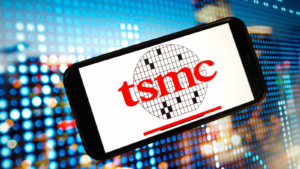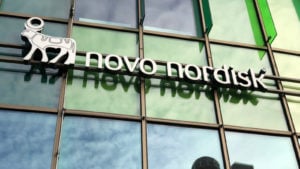
With so many moving parts in the market, investors shouldn’t just focus on explosive growth ideas. Instead, they should turn to the safety of, well, safe stocks to buy.
Before you start protesting, I’m not suggesting that you walk away from your star performers. If they’re working for you, ride them higher – be my guest. However, I also believe it makes sense to consider safe stocks to buy for providing a performance baseline.
As an example, if you’re managing a baseball team, you don’t want your lineup to be too top heavy. Many games are won and lost in the bottom of the order. If you don’t have reliable players being productive across your roster, you’re going to be losing games you shouldn’t.
It’s the same principle here. You’ll want to focus on your core names, the ideas that got you where you are right now. However, don’t ignore beefing up your performance holistically. With that, below are safe stocks to buy.
Microsoft (MSFT)

When it comes to balanced safe stocks to buy, it may not get much better than Microsoft (NASDAQ:MSFT). As an overall technology juggernaut, Microsoft has its hands in everything: hardware, software, artificial intelligence, you name it, it’s doing it. As I’ve mentioned several times before, I believe the company offers tremendous relevancies for the burgeoning gig economy. Its suite of business software is simply indispensable.
As for the hard numbers, they speak for themselves. In the four quarters between the second quarter of 2023 and the first quarter of 2024, Microsoft posted an average earnings per share of $2.82. In terms of beating analysts’ consensus expectations, the positive surprise came out to 7%, per Yahoo Finance data. It’s not the most impressive print but MSFT wins in the consistency game.
Over the trailing 12 months (TTM), the company posted net income of $86.18 billion, translating to EPS of $11.55. Revenue during the period reached $236.58 billion. For fiscal 2024, analysts are looking for EPS to rise 20.2% to hit $11.79. The top line may rise 15.6% to reach $244.92 billion. Thus, it’s a great idea for safe stocks to buy.
Taiwan Semiconductor (TSM)

While Taiwan Semiconductor (NYSE:TSM) may be an obvious idea for safe stocks to buy, it’s still worth mentioning. As a powerhouse in the semiconductor foundry business, the company – abbreviated as TSMC – plays a vital role in the tech value chain. Fundamentally, TSMC enjoys a strong relationship with Nvidia (NASDAQ:NVDA). And that’s where the “obvious” label comes in.
Basically, whatever’s good for Nvidia should translate to downwind benefits for the semiconductor contract manufacturing specialist. Better yet, it delivers the goods financially. During the past four quarters, TSMC posted an average EPS of about $1.32. That translates to a positive earnings surprise of 6.55%. Again, it’s not blistering but it’s darn consistent.
For fiscal 2024, analysts are looking for EPS to rise to $6.31. That comes out to a 21.6% improvement over last year’s result of earnings of $5.19 per share. On the top line, experts are seeking sales of $85.19 billion. If so, that would be a 22.7% boost from last year’s $69.4 billion.
There could be even more growth, with fiscal 2025 revenue projected to hit $103.48 billion. It’s easily one of the safe stocks to buy.
Novo Nordisk (NVO)

While I’m going to stick Novo Nordisk (NYSE:NVO) on this list of safe stocks to buy for its relevance to the weight-loss drug sector, the idea may come with a tad bit of controversy. That’s because analysts – while rating NVO a consensus strong buy – only have an average price target of $149.60. That only leaves about 5% of growth potential based on Thursday’s close. So, how is that really safe?
It can be a tough argument because Novo’s forward annual dividend yield is around 1%. That’s not a whole lot when the capital gains potential is limited. However, analysts may need to adjust their expectations northward. First, weight-loss drugs have witnessed incredible popularity. Therefore, the trajectory seems quite vertical in a good way.
On a terribly cynical note, multiple health organizations have noted that obesity is a major problem in the U.S. In other words, the narrative is expanding horizontally in a “good” way for NVO stakeholders. Now, however, you want to dice it, analysts see tremendous growth: 29.1% in fiscal 2024 to sales of $42.77 billion and 20.4% growth in fiscal 2025 to $51.48 billion.
Kenvue (KVUE)

Another healthcare-related idea for safe stocks to buy, investors may want to consider the narrative for Kenvue (NYSE:KVUE). As the former consumer health products unit of Johnson & Johnson (NYSE:JNJ), Kenvue is now its own publicly traded entity. For stakeholders prior to the spin off, I genuinely believe value will be unlocked. As for new shareholders, KVUE should at least be a must-watch idea.
Right now, the consumer economy faces myriad challenges. People are complaining about the high cost of living with rampant inflation and elevated borrowing costs. However, Kenvue brings products to the table that really indelible. I mean, everybody gets the occasional boo-boo. By providing first-aid kits and the elements within them, Kenvue practically enjoys permanent relevance.
Also, it’s a powerhouse in the over-the-counter medicine sector. Again, everybody occasionally gets the sniffles. People aren’t necessarily going to run to the doctor for such incidents. So, they’ll turn to trusted brands, of which many fall under the Kenvue umbrella.
Add in the sweet forward dividend yield of 4.29% and you’re going to be sleeping easy at night.
Target (TGT)

As a big-box retailer, Target (NYSE:TGT) offers something for everyone – or about as close to everyone as you can get. What I appreciate about Target is that it falls right into the sweet spot in terms of customer income levels. Generally, its mainline rival Walmart (NYSE:WMT) targets lower-to-middle-income households. Costco (NASDAQ:COST) runs on the high end, in part due to its membership-only business model.
Target? It appeals to the middle class. I’m not the arbiter of big-box retailers or anything. However, there’s a different ambiance when you walk into a Target as opposed to a Walmart. I can’t put my finger on it (well, I can, but let’s say I can’t). Here’s what we can all agree on: the financials. In the past four quarters, the average EPS landed at $2.23 approximately. That comes out to an average surprise of 23.6%.
To be fair, Target missed the quarter ended April 30, 2024. And the current fiscal year’s sales may be disappointing at $106.9 billion, which would be down half-a-percent from last year. However, the high-side view also hits $107.55 billion.
Further, a recovery should be in place by its fiscal 2026, with consensus revenue landing at $110.9 billion. With a dividend yield of 3.03%, I believe TGT makes for a solid case for safe stocks to buy.
Coca-Cola (KO)

Global beverage giant Coca-Cola (NYSE:KO) inherently makes a case for safe stocks to buy. Obviously, it’s an absolute giant of an enterprise, with a market capitalization of $276.36 billion. It’s probably not going to make you rich. But it’s also probably not going to make you poor. A dividend yield of 3.02% helps ensure that statement. That’s well above the consumer staple sector’s average yield of 1.89%.
However, that’s not the main reason I’m discussing the icon of American capitalism. Instead, I’m intrigued by the possible forward potential of its energy drink called, surprisingly enough, Coca-Cola Energy. Let’s get the bad news out of the way. At the end of 2020, this new product represented just 0.7% of U.S. energy drink sales, according to The Wall Street Journal. So, it got pulled.
Nevertheless, the potential is there. According to Grand View Research, the expected annual growth rate for energy drinks in the year 2030 comes to 8.3%. For the traditional coffee beverage, the growth rate over the same period lands at 5.2%.
Again, there’s opportunity here if Coca-Cola wants to revisit or rebrand its energy beverage.
Chevron (CVX)

As a hydrocarbon energy giant, Chevron (NYSE:CVX) should cynically benefit from the geopolitical flashpoints that are presently raging. However, it’s a tricky narrative. First, the Ukrainians have aggressively attacked Russia’s oil refineries. On paper, that’s bad for global supply and good for CVX stakeholders as demand artificially rises. However, the Russians aren’t exactly great at refining their crude oil.
With its downstream units being compromised by the Ukrainians, Moscow must essentially greenlight fire sales of crude. That’s good for global supply and bad for CVX stakeholders. So, why mention Chevron in this list of safe stocks to buy? At the end of the day, the world continues to run on oil. Further, the situation in the Middle East could easily escalate. If so, global oil supply chains could be disrupted, leading to price swings higher.
It appears that analysts have recognized the possibility of this framework coming to fruition. Recently, several analysts have reiterated or even assigned buy ratings. Overall, the consensus stands at strong buy and the average price target has improved to $187.20. That implies 20% upside potential.
On the date of publication, Josh Enomoto did not have (either directly or indirectly) any positions in the securities mentioned in this article. The opinions expressed in this article are those of the writer, subject to the InvestorPlace.com Publishing Guidelines.






